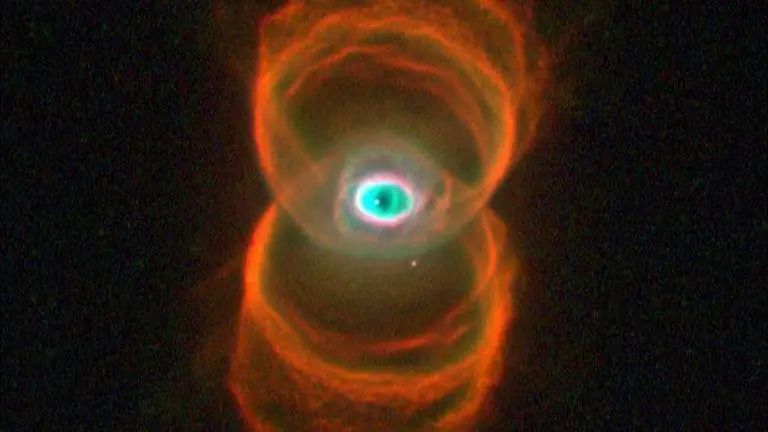Updated 15 November 2021 at 20:08 IST
NASA shares a mesmerising Hubble image of 'hourglass nebula' 8,000 light-years away
NASA’s Hubble Space Telescope shared an image of the hourglass nebula also called MyCn18, located 8,000 light-years away from Earth.
- Science News
- 2 min read

Since we have entered the halfway point of Nebula November, NASA’s Hubble Space Telescope shared an image of the hourglass nebula, located 8,000 light-years away from Earth. Named MyCn18, the image was captured by the Wide Field and Planetary Camera 2 (WFPC2) on the telescope. With orange as the dominant colour, the nebula can give one the chills owing to its central portion that appears to be an eye peeping through the fabric of space.
🌀 Anyone else mesmerized?
— Hubble (@NASAHubble) November 14, 2021
As we near the halfway point of #NebulaNovember, take in this spectacular view of the Hourglass Nebula.
This is a young planetary nebula about 8,000 light-years away: https://t.co/1xOwD5GRZ1 pic.twitter.com/x8h2noeNeL
According to the description presented by Hubble on Flickr, the image featuring the bright orange entity, is composed from three separate images taken in the light of ionized nitrogen (represented by red), hydrogen (green), and doubly ionized oxygen (blue). The description further said,
“The results are of great interest because they shed new light on the poorly understood ejection of stellar matter that accompanies the slow death of Sun-like stars”.
Besides, what makes it even more special is that in the previous images taken by ground-based telescopes, MyCn18 appeared to be a pair of large outer rings with a smaller central one, but the fine details could not be seen.
The spooky nebula and its features
In the case of this young planetary nebula, the hourglass shape is produced by the expansion of a fast stellar wind within a slowly expanding cloud that is more dense near its equator than near its poles. However, NASA says that the Hubble image of MyCn18 has revealed that this nebula does not fulfill some crucial theoretical expectations. It said that close inspections of the image reveals that the bright elliptical ring in the center, is actually a potato-shaped structure with a symmetry axis dramatically different from that of the larger hourglass. “The hot star that has been thought to eject and illuminate the nebula, and therefore expected to lie at its center of symmetry, is clearly off-center,” as per the description.
Advertisement
According to NASA, this Hubble image has also revealed several new and unexpected features of MyCn18. The new features include a pair of intersecting elliptical rings in the central region, which appear to be the rims of a smaller hourglass. Moreover, there are intricate patterns of the etchings on the hourglass walls which could be the remnants of discrete shells ejected from the star when it was younger.
Image: Twitter/@NASAHubble
Published By : Harsh Vardhan
Published On: 15 November 2021 at 20:08 IST
